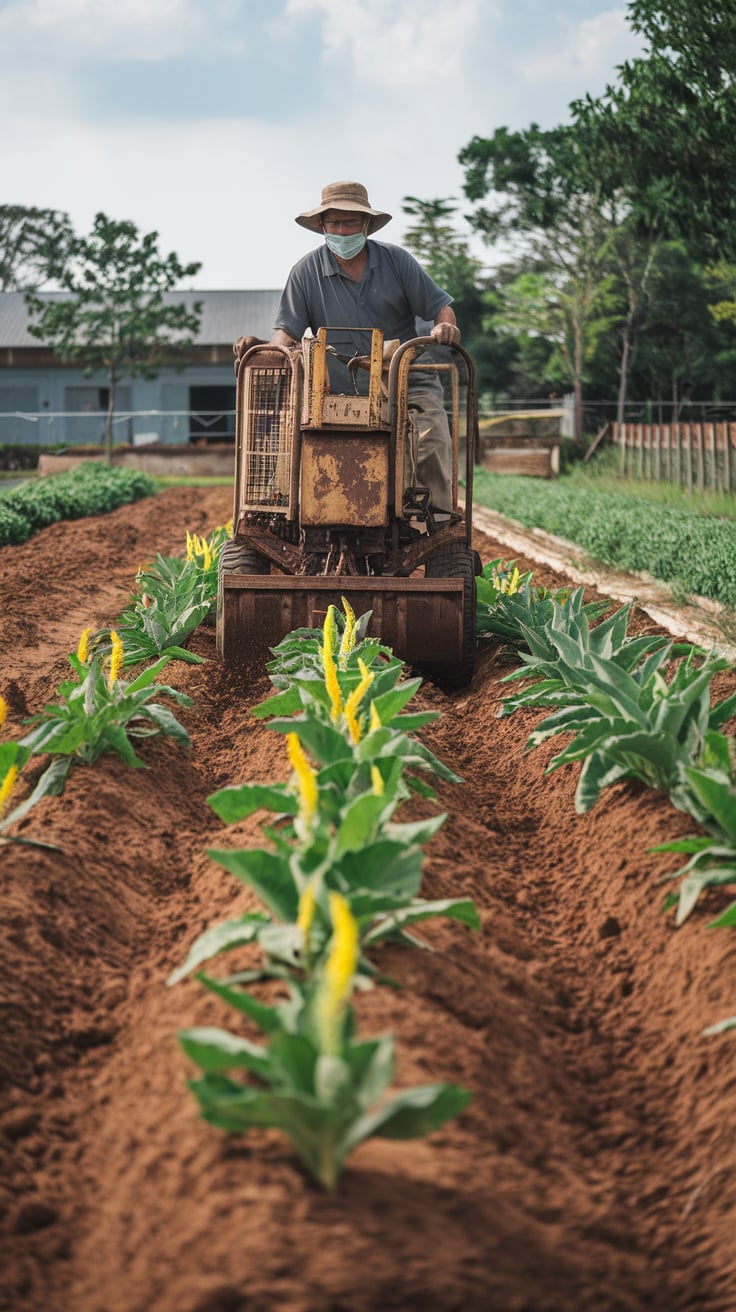Transitioning or conversion to organic agriculture is a comprehensive process that involves adopting practices that prioritize sustainability, natural resources, and ecological balance. Unlike conventional farming, which relies heavily on synthetic inputs, organic farming emphasizes working in harmony with nature. The journey to organic farming varies from one farm to another, influenced by local circumstances, farmer knowledge, and community involvement.

Farmers who undertake this conversion face unique challenges and opportunities. With proper understanding and planning, however, they can overcome hurdles and establish productive, sustainable farming systems. Below, we explore the crucial considerations and recommendations for successfully converting to organic agriculture.
Understanding the Conversion Process
Conversion to organic agriculture or farming is not a one-size-fits-all procedure. It is a gradual shift, with the duration and effort required depending on existing farm conditions, soil health, and the farmer’s familiarity with organic practices.
Farmers must begin by embracing the core principles of organic agriculture: avoiding synthetic inputs, enhancing soil health, and promoting biodiversity. While organic farming can be adopted on any land, farms with degraded soils or poor fertility may require more significant efforts and time to achieve sustainability and satisfactory yields.
Key Factors to Consider During Conversion to organic agriculture
1. Soil Health and Fertility

Healthy soil is the foundation of organic farming. Before transitioning, farmers need to assess the current condition of their soil. Depleted soils, for instance, may require intensive restoration efforts, including the application of compost, organic matter, and natural fertilizers.
Recommendations:
- Conduct soil tests to evaluate fertility, pH levels, and microbial activity.
- Use compost, green manure, and natural amendments to replenish nutrients.
- Incorporate practices like crop rotation and cover cropping to enhance soil structure and fertility.
2. Knowledge and Training
The farmer’s understanding of organic farming concepts plays a pivotal role in the success of the transition. Organic methods require different techniques and management strategies than conventional farming.
Recommendations:
- Attend workshops, seminars, or training sessions on organic farming practices.
- Network with experienced organic farmers to exchange insights and best practices.
- Stay updated on regional organic certification requirements and standards.
3. Pest and Weed Management
In the absence of synthetic chemicals, managing pests, diseases, and weeds can be a significant challenge. Organic systems rely on natural and preventative measures for control.
Recommendations:
- Employ Integrated Pest Management (IPM) techniques, such as crop rotation, intercropping, and natural repellents.
- Encourage beneficial insects like ladybugs and parasitic wasps to control pest populations.
- Use mulch and mechanical methods for weed suppression.
4. Market Access and Consumer Demand
Farmers transitioning to organic systems must identify markets for their organic products. Organic produce often commands premium prices, but accessing these markets requires certification and effective marketing.
Recommendations:
- Research local and international markets to understand consumer preferences.
- Obtain organic certification to enhance credibility and marketability.
- Use branding and storytelling to highlight the unique qualities of organic produce.
5. Financial Considerations
The transition period may involve a temporary decline in yields and additional costs, such as certification fees and investments in organic inputs. Farmers must prepare for these financial challenges.
Recommendations:
- Develop a detailed budget that accounts for transition costs and potential income fluctuations.
- Explore subsidies, grants, or financial assistance programs for organic farming.
- Diversify income sources by incorporating complementary activities like agro-tourism or value-added products.
Practical Steps for a Smooth Transition
- Start Small: Begin by converting a portion of the farm to organic practices to gain experience before scaling up.
- Plan Crop Rotations: Design crop rotations that reduce pest pressures, improve soil fertility, and prevent nutrient depletion.
- Enhance Biodiversity: Introduce hedgerows, cover crops, and mixed cropping systems to create a resilient farm ecosystem.
- Maintain Records: Keep detailed records of farming activities, input sources, and harvests to ensure compliance with certification standards.
- Seek Community Support: Collaborate with other farmers, local organizations, and cooperatives for knowledge sharing and collective problem-solving.
Overcoming Challenges of conversion to organic agriculture
The journey to organic farming is not without obstacles. Farmers may face skepticism from peers, difficulty accessing organic inputs, or initial declines in productivity. However, with persistence and strategic planning, these challenges can be mitigated.
Long-Term Benefits:
- Improved soil health and ecosystem resilience.
- Reduced dependency on costly synthetic inputs.
- Enhanced profitability through premium pricing and consumer loyalty.
The Role of Community and Policy Support
Communities and policymakers play a vital role in supporting organic transitions. By fostering awareness and creating favorable policies, they can encourage more farmers to embrace organic practices.
Policy Recommendations:
- Provide subsidies or tax incentives for organic farming initiatives.
- Establish local markets and supply chains for organic produce.
- Offer training programs and resources to build farmer capacity.
Community Initiatives:
- Organize farmer groups or cooperatives to share resources and expertise.
- Promote organic awareness campaigns to educate consumers and build demand.
Conclusion
Conversion to organic agriculture is a transformative journey toward sustainable and natural farming. While the process varies based on local conditions and individual circumstances, the principles remain consistent: nurturing the soil, preserving biodiversity, and prioritizing ecological balance.
By addressing the critical factors outlined above and implementing the recommended practices, farmers can navigate the challenges of the transition and reap the long-term rewards of organic farming. With the growing global emphasis on sustainability, organic agriculture represents a promising path for the future of farming. Some more sources are here
FAQs
1. How long does it take to convert to organic farming?
The transition typically takes 2-3 years, depending on soil health and compliance with certification standards.
2. Is organic farming suitable for small-scale farmers?
Yes, organic farming is well-suited for small-scale farmers, as it reduces dependency on expensive synthetic inputs and leverages natural resources.
3. Can depleted soils support organic farming?
Yes, but restoring depleted soils requires time, effort, and the use of organic amendments to rebuild fertility.
4. What are the main challenges of organic farming?
Challenges include pest and disease management, financial constraints, and achieving certification.
5. Are there financial incentives for transitioning to organic farming?
Many governments and organizations offer grants, subsidies, and technical support for farmers adopting organic practices.

